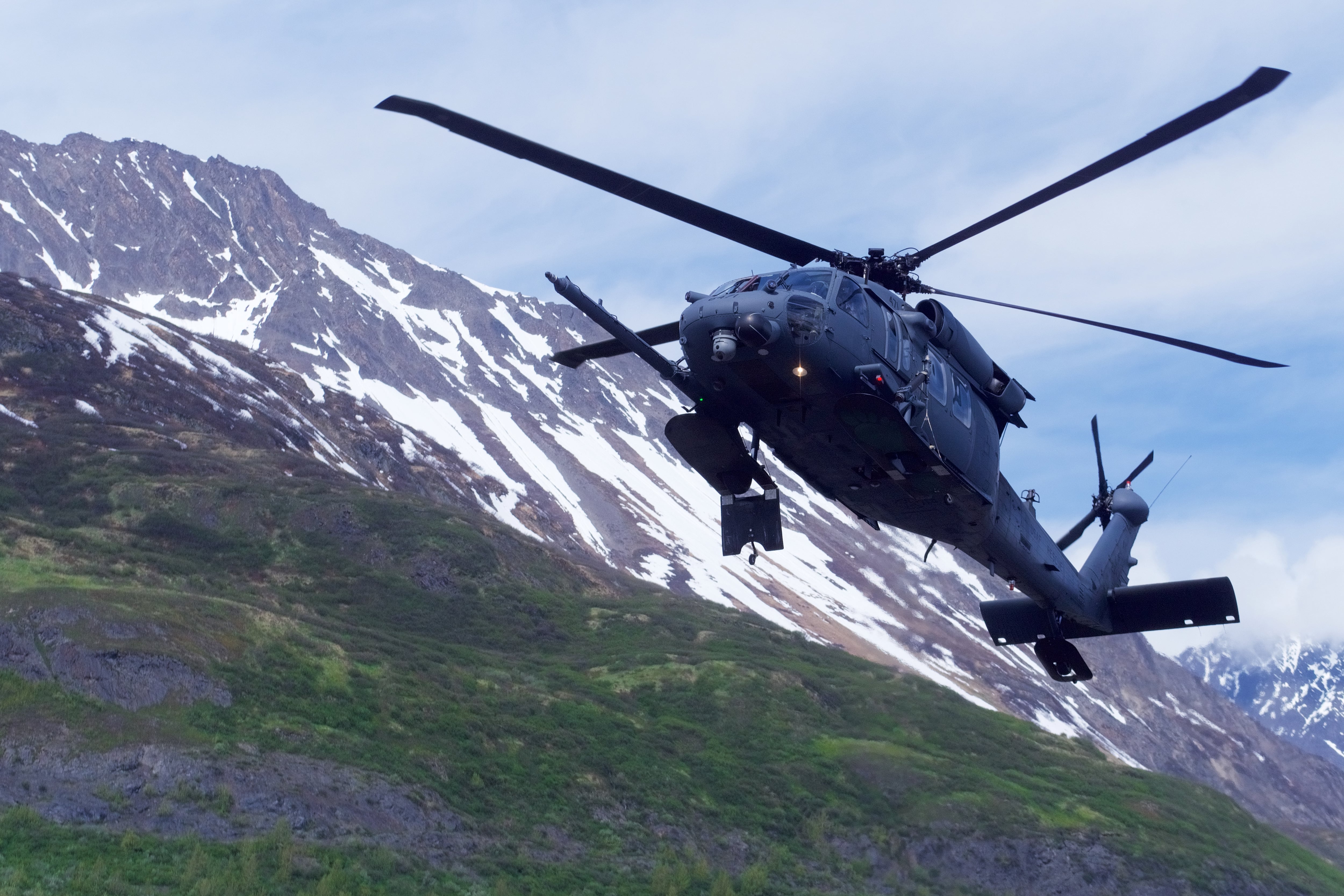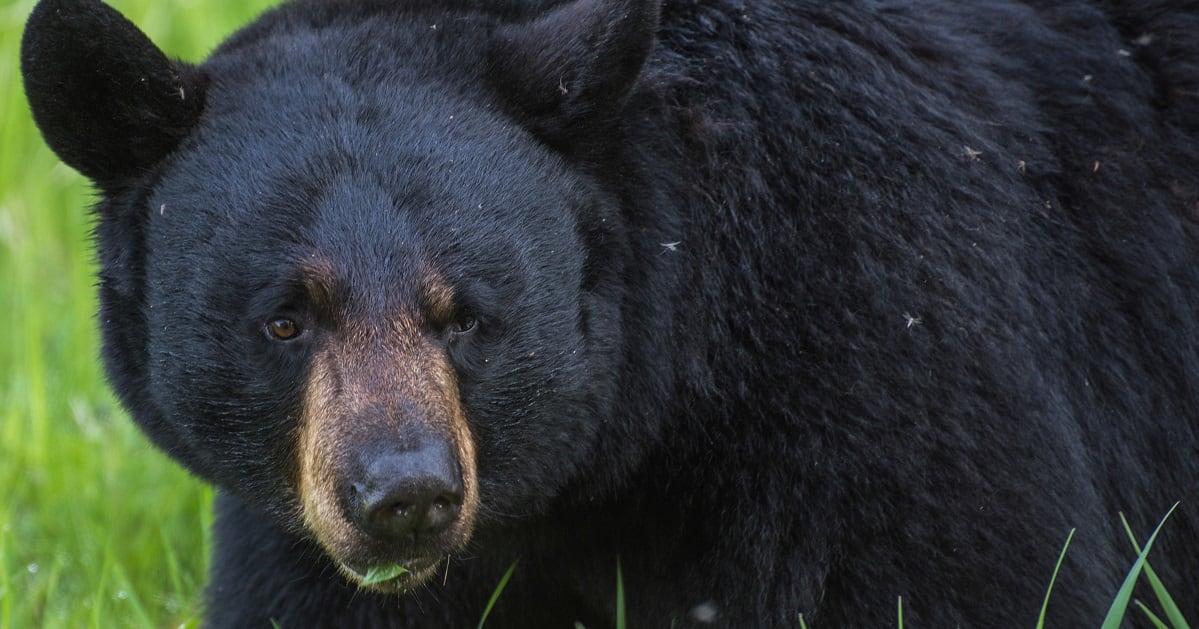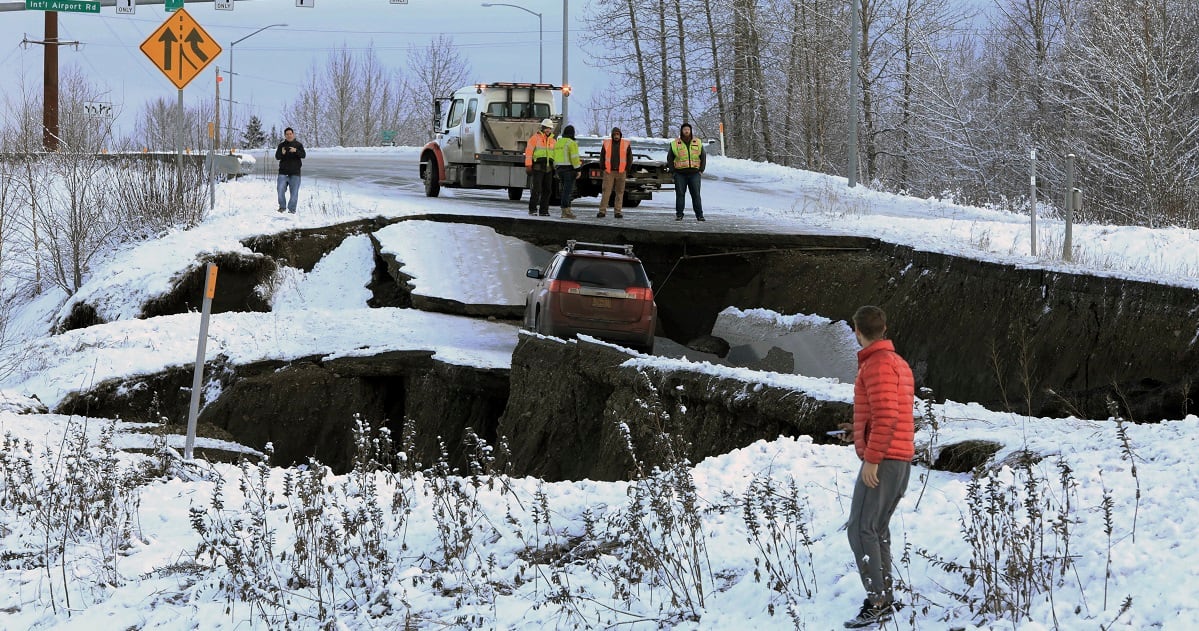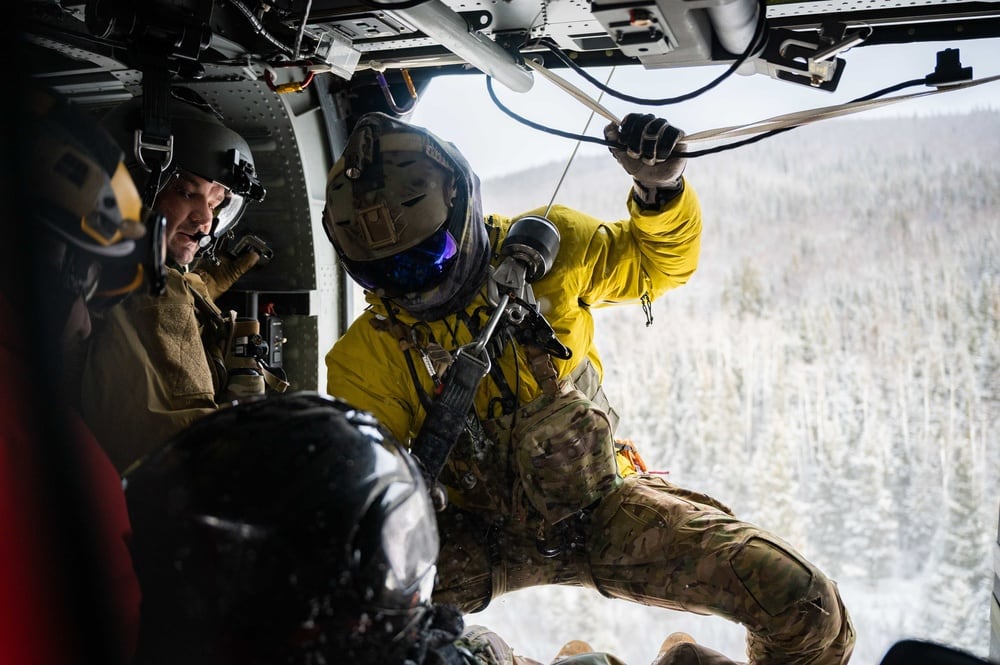It could have been a scene ripped from an action film: Two simultaneous, high-stakes rescue missions. A late-spring blizzard in the inhospitable Alaskan mountains. Ill mountain climbers. A crashed plane. And a scramble for aircraft to carry 13 people to safety.
That Hollywood-esque adventure played out in real life over Memorial Day weekend this year, earning the Air National Guardsmen of the 176th Wing at Joint Base Elmendorf-Richardson in Anchorage the 2021 Jolly Green Rescue Mission of the Year award from the Jolly Green Association.
More than 75 airmen across 10 units in the wing responded to the dual emergencies in Wrangell-St. Elias National Park and Preserve, described in Air Force press releases on June 7 and Sept. 29. The 13.2 million-acre park is as large as Yellowstone National Park, Yosemite National Park and Switzerland combined.
RELATED

“Generating these sorties required all hands on deck as weekend-alert maintenance personnel were called in to repair and inspect nearly our entire fleet for continuous, extended-range rescue operations,” said Chief Master Sgt. Eric Chester, the 176th Aircraft Maintenance Squadron superintendent. “Our maintenance teams generated more than 250 percent of our normal aircraft capacity.”
The problems began the morning of Saturday, May 29, when two members of a group of mountaineers on Klutlan Glacier, near Mount Bona in eastern Alaska, fell ill with altitude sickness around 14,000 feet. Civilian rescue efforts in the area tried and failed to fly through thick clouds, high winds and whiteout snow to reach the climbers, the Air Force said, so the National Park Service called in the Alaska Rescue Coordination Center at JBER.
Airmen from the 210th, 211th and 212th Rescue Squadrons sent out an HH-60G Pave Hawk search-and-rescue helicopter, an HC-130J Combat King II transport plane and a Guardian Angel team of two pararescuemen and a special-missions aviator to keep the flight running smoothly.
But harsh weather stymied multiple attempts by the Pave Hawk to reach the mountaineers. The HC-130J tried to airdrop medical supplies to the group until rescuers could break through the storm.

A few hours into the Mount Bona mission, a small Cessna 182 plane carrying two men crashed at 6,500 feet on Mount Hawkins in southern Alaska. Those stranded were 62-year-old pilot James Feola from Cassville, New York, and 62-year-old passenger Frederick Northup from Fairfield, New York. Both were en route from Talkeetna to Yakutat, Alaska, according to the National Park Service.
NPS asked Paul Claus, chief pilot and owner of the nearby Ultima Thule Lodge, to locate the plane, but weather continued to interfere. So the Park Service again called on the rescue coordination center.
During typical training and rescue alert operations, two or three crew chiefs from the 176th Aircraft Maintenance Squadron can ready one HC-130 and one HH-60. Tackling two rescues at once required two Combat King IIs, four Pave Hawks, 10 crew chiefs and two maintenance leads.
Mountain-climbing guides moved their group down to 10,000 feet to set up shelter and wait. For three nights, the group built and rebuilt snowbanks to protect themselves from the wind and shoveled out a place for a helicopter to land. They decided all 11 people in their expedition should be airlifted out rather than send off only those who were sick.
On Sunday, May 30, rescue coordinators tapped a CH-47 Chinook heavy-lift helicopter from the Alaska Army National Guard’s 1st Battalion, 207th Aviation Regiment, to save the stranded climbers. Like the Pave Hawk, the Chinook approached the mountain multiple times, while the HC-130J monitored the weather overhead.
RELATED

Aircrews flew more than 20 sorties more than 80 hours while looking for another way through the uncooperative weather from Gulkana and McCarthy airports.
Amid that operation, Guardsmen were scrambling to put up additional airframes to respond to the Cessna crash. One helicopter they needed to use for the mission had been disassembled for heavy maintenance, requiring airmen to put it back together again and fix more than 30 issues that would have prevented it from flying.
“It took all weekend to piece the helicopter together, but it was back to fully mission-capable status on Monday morning and ready to assume alert for the final sortie of the mission,” Chester said. “This is key because we exhausted every other resource we had, and it was the last tail we had to fall back on.”
On May 31, that Monday, the weather cleared on Mount Hawkins long enough for a Pave Hawk to reach the plane wreck, send down Guardian Angel airmen, and bring back both crash survivors.
Then in the early evening of Tuesday, June 1, the Chinook touched down at the climbers’ shelter, safely bringing 11 people and 1,000 pounds of their gear onboard. A flight medic stabilized the mountaineers with altitude sickness and treated a third person with minor frostbite.
RELATED

“The Chinook transported the mountaineers to Gulkana Airport, where the members with high-altitude sickness and the flight medic were transloaded to the Combat King and [medically evacuated] to Anchorage,” the Air Force said in June.
It marked the first high-altitude heavy airlift for the Alaska-based Chinooks, according to Lt. Col. Michele Edwards, an aviation officer with the Alaska ANG.
C-130 combat systems operator Maj. Rebecca Altenburg accepted the award from the Jolly Green Association, a nonprofit group named for the “Jolly Green Giant” moniker given to various combat search-and-rescue helicopters over the past several decades, on behalf of the 176th Wing on Sept. 11 in Walton Beach, Florida.
The Jolly Green name is coming back, too: the Air Force is replacing its HH-60G Pave Hawks with a newer Sikorsky model, the HH-60W Jolly Green II, for greater speed, range and firepower in search-and-rescue situations.
The daring missions were just the tip of the iceberg for the 176th Wing: Earlier this year they picked up an injured musher in the famed Iditarod sled dog race in March, and helped a hunter who was mauled by a bear in the Wrangell-St. Elias area in September.
Rachel Cohen is the editor of Air Force Times. She joined the publication as its senior reporter in March 2021. Her work has appeared in the Washington Post, the Frederick News-Post (Md.), Air and Space Forces Magazine, Inside Defense, Inside Health Policy and elsewhere.




